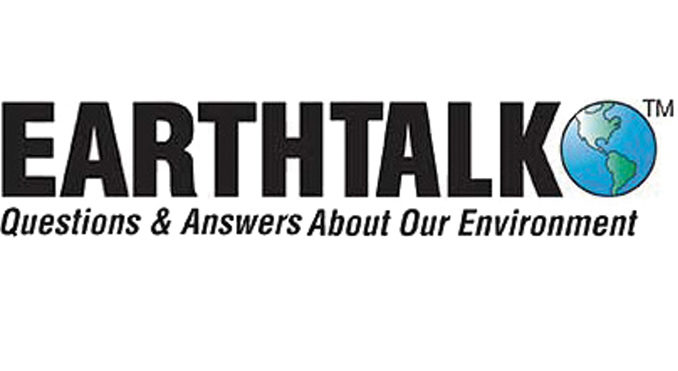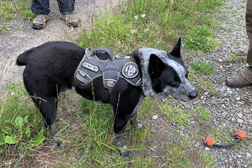
Dear EarthTalk: How will the homes of the future look and feel different as a result of global warming? ~ A.G., Silver Spring, MD
No doubt, homes are changing dramatically as the planet warms. Recent data from the United Nations Environment Programme shows that construction and use of residential buildings accounts for 17 percent of global greenhouse gas emissions. As architects and engineers look to reduce their environmental footprint, homes are starting to change in several key ways.

In general, new construction homes are the most likely to be the most resilient to climate change. New forms of concrete that are made from recycled or waste-based material save a large share of carbon emissions associated with the production of virgin concrete. Painting the roof white or another light color can reduce air conditioning use extensively by reflecting the sun’s rays and their heat back toward the sky instead of absorbing them into the building structure. The U.S. Department of Energy reports that painting your roof white or another light color enables it to reflect solar radiation and keep up to 50 degrees colder than a typical roof on a hot day.
As for winter, making sure a house’s shell is tight and free of drafts is one key to efficiency, as well as the use of eco-friendly insulation in walls and roofs. Strategically placed windows can help reduce winter heating bills through so-called “passive solar” heating.
The use of integrated systems and smart home technology to link up appliances and lights and run them only when needed is another hallmark of the home of the future. Likewise, design and materials considerations will play a large role in making these new homes as energy and water efficient as possible.
The geographic distribution of housing is also changing due to global warming. Cities across the U.S. are debating proposals to build high-density housing along bus and rail lines, with the hope that easier access to public transportation will reduce vehicle emissions. Inside, the homes of the future are likely to be chock full of eco-friendly innovations to reduce energy usage, from space age insulation materials to hyper-efficient electric appliances and lights that turn on and off as needed.
Finally, some places are taking an entirely new approach to housing. The Netherlands, a nation at extremely high risk of flooding, is pioneering floating homes, which are anchored tightly to the shore but can rise and fall with the tide. Unlike houseboats, the Dutch floating homes are connected to their local electricity and sewage systems and are stabilized in the water with a concrete hull, according to YaleEnvironment360. Though they function essentially the same as any other house, their ability to ride out a flood will protect them from damage long into the future. As seas rise and coastal communities around the world lose their land to the water, the Netherlands’ floating houses could be harbingers of what the homes of the future will look like.
CONTACTS: UNEP 2021 Global Status Report For Buildings and Construction, globalabc.org/resources/publications/2021-global-status-report-buildings-and-construction; Construction21, construction21.org; Cool Roofs, energy.gov/energysaver/cool-roofs; Embracing a Wetter Future, the Dutch Turn to Floating Homes, e360.yale.edu/features/the-dutch-flock-to-floating-homes-embracing-a-wetter-future.
Dear EarthTalk: What are conservation dogs? ~ Jon Gretcham, Portland, OR
Simply put, conservation dogs are canines specially trained in sniffing out evidence of specific wildlife species that scientists are seeking to learn more about for one reason or another. Most commonly these dogs are used to help biologists understand where and how threatened or endangered wildlife species are hanging on—or if they are still around at all.

At the forefront of this burgeoning field is Rogue Detection Teams (RDT), a Washington State based non-profit that sends their specially trained dogs around North America and beyond to help scientific researchers, government agencies and non-profit groups gather field evidence in order to further their conservation work.
It’s no wonder that conservationists have started using detection dogs, a standard practice in the military and law enforcement since the 1940s when U.S. troops first employed canines to detect German land mines in North Africa. By pairing human handlers well-versed in ecology and biology (the “bounders”) with detection dogs trained on a specific scent, conservationists can monitor the density, distribution and overall health of certain species of concern.
To wit, Rogue’s dogs have worked all over the world helping conservation groups bolster their cases with hard data collected in the field. The majority of the Rogue’s work so far has been in the American West, but teams are scattered as far afield as Brazil, Europe, Africa, Southeast Asia and the Middle East in search of everything from sea turtles to grasshoppers to pygmy rabbits, big cats, red foxes and bumblebees.
What makes for a perfect conservation dog? The best detection dogs wouldn’t necessarily make a great pet, as they tend to be obsessed with reward accumulation. “Our dogs are typically considered unadoptable due to their high energy and obsessive desire to play fetch,” says Rogue’s Jennifer Hartman. “This obsessive energy is quite perfect for us because we pair this with detecting an odor and reward our dogs with their ball for locating the odor.” Rogue’s dogs can cover up to 15 miles a day in survey work, and still have energy left over for more playtime after the search.
And it doesn’t take a specific breed or size dog—it’s all about the dog’s so-called ‘high ball drive’. “We have quite a few Labrador mixes as well as heeler mixes because these seem to be high drive dogs that end up in shelters, but we also have a chihuahua mix and what might be a papillon mix in our program,” reports Hartman. “We love all dogs though, and don’t discriminate as long as they like to play fetch!”
Currently Rogue runs 19 dogs out of its Washington State headquarters. The organization, founded in 2019 by a group of conservation-oriented dog handlers who had been doing this sort of work on their own for more than a decade, also runs programs to train others’ dogs (and their owners) in these canine “detection” practices. Through its training work, Rogue hopes to develop the next generation of bounders to carry on the innovative work of the conservation dogs in helping other species hang on in this warming-compromised world.
CONTACTS: Rogue Detection Teams, roguedogs.org; “A Nose for Science: Conservation Dogs May Help in Search for Endangered Franklin’s Bumblebee,” https://therevelator.org/conservation-dogs-bumblebee/.
EarthTalk® is produced by Roddy Scheer & Doug Moss for the 501(c)3 nonprofit EarthTalk. See more at https://emagazine.com. To donate, visit https//earthtalk.org. Send questions to: question@earthtalk.org.
